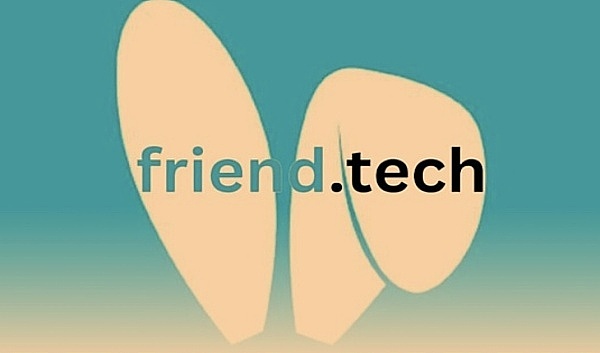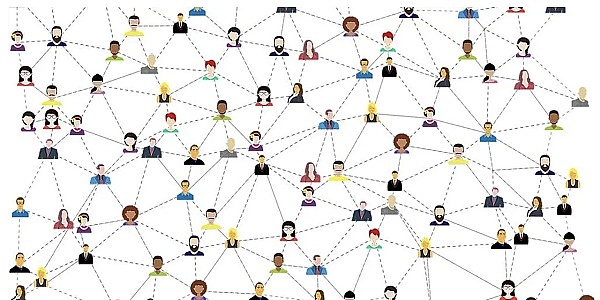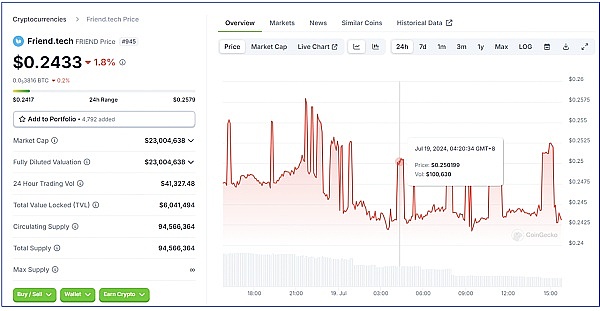Author: DeMan
Friend.Tech is a decentralized social platform deployed on the second-layer network "Base Chain" created by Coinbase, featuring its tightly integrated X platform (formerly Twitter) and Web2 identity verification.
Friend.Tech's integration allows users to conduct potentially profitable activities based on their existing social media identities. On this platform, users' social influence and engagement can be directly priced in the market through tokenization.
As one of the most successful Web3 applications in the SocialFi space, Friend.Tech has shown strong financial performance in its first month of launch, achieving the highest revenue to net deposit ratio in history, with revenue exceeding US$2 million and corresponding to US$33 million in net deposits.
Against the backdrop of the increasing attention paid to decentralized social media, Friend.Tech's success story provides a powerful example of how to effectively combine social media dynamics and blockchain technology.

01 Successful SocialFi Fan Economy Model
Friend.Tech operates on the fan economy, where users need to join through an invitation code and deposit 0.01 ETH to start an account, which is used to purchase influence shares of other users.
These shares, also known as "Keys", not only represent the user's social influence, but also serve as a ticket to enter private chats. After users purchase Keys, they can directly have a one-on-one conversation with the influencers they invest in. This model not only enhances the interaction between fans and idols, but also allows fans to potentially benefit from the growing popularity of the content creators they support.
For content creators (KOLs), they can earn 5% of the fees from each share (Key) transaction, which provides them with continuous financial incentives. The platform Friend.tech also extracts 5% from each transaction, so a total of 10% of the fees will be charged for each transaction. Such a mechanism not only supports the continued operation of the platform, but also ensures that content creators can get direct financial returns from their efforts.
02 Starting: User-friendly
Friend.Tech effectively utilizes users' Web2 social networks by integrating Apple ID or email login and connecting Twitter accounts, greatly reducing the migration cost of new users.
In the early stages of social applications, it is a challenge to migrate existing social relationships to new platforms. Friend.Tech draws on successful Web2 cases, such as Meta's strategy of Instagram account intercommunication when launching Threads, to reduce users' migration resistance.
In addition, by issuing invitation codes in limited quantities and gradually increasing the number of invitation codes, Friend.Tech has created a sense of scarcity in the market and a rapid growth of initial users, once again emphasizing the importance of Web2 platforms in the initial startup stage of social media.
In terms of simplifying the user experience, Friend.Tech has embedded the Base official bridge page, allowing users to directly connect to wallets such as Metamask and conduct transactions within the application, greatly reducing the user entry threshold and operational complexity.
In addition, by adopting the implementation form of PWA (Progressive Web App), users can save web pages to the desktop without downloading and installing, simplifying the program development and regulatory listing process. The MPC wallet implementation in cooperation with Privy ensures higher security and user experience, without the need to sign for each transaction.
03 Development: Speculation Driven
The price model is one of the core mechanisms for Friend.Tech to attract users.
When a user first buys his first key at 0 price, the price of subsequent keys increases according to the formula of S^2/16000, where S represents the total number of keys.
This design not only pushes up the price, but also increases the extent to which latecomers push the price, making the price curve discrete rather than continuous, triggering users' speculative behavior.
In addition, by issuing 100 million points in the next six months, Friend.Tech has stimulated the active participation of users and the rapid growth of TVL. This move has also triggered extensive discussions on social platforms and enhanced the integration of social media and financial attributes.
04 Improvement: Value Construction
As trading demand increases, the ecosystem around Friend.Tech is gradually formed. Developers have developed various data dashboards and automation tools, such as FriendMEX provided by Paradigm engineers, to visualize the price of kol tokens and monitor new users and new transactions. The emergence of FT funds in the form of ETFs has also enriched the entire ecosystem, providing more value exchange and speculation opportunities.
In terms of user experience, new platforms such as Tomo and New Bitcoin City have demonstrated their complement and improvement to Friend.Tech by providing a smoother experience, richer features and a more secure wallet design. The emergence of these platforms not only provides a diversified user experience, but also strengthens the integration of social and financial attributes, further promoting the development of the SocialFi field.
Friend.Tech has effectively combined social media and blockchain technology through its innovative design and strategy, becoming a phenomenal application. Its success lies not only in technical implementation and market strategy, but also in its ability to capture the social and economic needs of users and create a new social platform that is both speculative and practical.
05 Key Dynamics at a Glance
[Beta Release and User Growth]
On August 11, 2023, Friend.Tech launched its beta version, which immediately attracted widespread attention and discussion.
After the launch, new users surged by more than 64,000, and transaction volume exceeded 24,000 ETH. This significant growth not only demonstrates Friend.Tech's strong ability to attract new users and promote blockchain participation, but also shows its wide appeal among non-cryptocurrency users.
Amid the praise in the cryptocurrency field, many acknowledged that the application has performed well in guiding a large number of individuals to join the blockchain. However, some forward-looking voices began to explore the burnout that users may experience, reflecting concerns about the sustainable development of the platform.
【Paradigm Seed Round Financing and Financial Performance】
Friend.Tech announced that it had obtained Paradigm's seed round financing on its official Twitter. Against the backdrop of the overall poor performance of the market, this financing brought significant financial and traffic support to Friend.Tech. The project has accumulated more than 11 million transactions in two months, with more than 500,000 user addresses and achieved more than 21 million US dollars in revenue. These data not only prove the effectiveness of its business model, but also demonstrate its ability to achieve financial self-sufficiency in a short period of time, which is particularly rare in the market environment at the time.
【Social media strategy sparks controversy】
In April 2024, Friend.Tech's social media strategy sparked widespread controversy.
In a series of tweets posted on the official Twitter account, the platform claimed that "Friend.Tech users are all rich people, and poor people should not get involved with Friend.Tech", which attracted widespread attention and discussion in the community.
Initially, these tweets were believed to be stolen accounts, but subsequent tweets were clearly intentional, suggesting that the upcoming V2 version would focus on the high-end market. Although this aggressive social media strategy increased the attention of the V2 version, it also caused tension within the community and questioned the platform's values.

【V2 Release and Challenges】
On May 4, 2024, with the launch of V2, Friend.Tech attempted to enhance user governance and interaction by introducing new features and changes.
The core feature of V2 is the introduction of the $FRIEND token, marking the platform's move towards a more decentralized and community-driven direction.
However, the launch of the new version has been criticized for its unclear user interface and lack of user guidance. In particular, the newly introduced "Club" feature, which aims to enhance community feeling and participation, has a bumpy implementation process and user experience, making it difficult for users to claim airdrops, join clubs, or find established clubs.
【Developing Friendchain and Maintaining Base Cooperation】
In June and July 2024, Friend.Tech announced that it would work with Conduit to develop Friendchain using FRIEND as the Gas Token. This plan initially showed Friend.Tech's shift from relying on existing blockchain platforms to building its own chain. However, after extensive feedback from the community, Friend.Tech decided that the FRIEND token would not be migrated from the Base chain. This decision highlights the importance of community input and emphasizes the importance of maintaining a 100% community-controlled token.
【Airdrop Claims and Community Feedback】
On May 3, 2024, Friend.Tech opened airdrop claims for FRIEND tokens. Previously, the platform announced on the X platform that in response to user requests for shared airdrops, the token claim process would be optimized. This decision shows Friend.Tech's responsiveness to user needs and its openness to adjusting strategies based on community feedback.
Summary
Friend.Tech has demonstrated clear advantages in community-driven token design, deepening of social interaction, and innovation in platform governance. At the same time, the platform is also facing challenges in user experience, community disputes, and uncertainty in execution, which together affect users' judgment of its long-term value.

In the future, Friend.Tech should continue to promote technology updates and functional expansion, and its position in the blockchain social media market may become clearer.
At present, for investors and users, Friend.Tech may be both a hidden growth opportunity and a high-risk option that needs to be treated with caution. In this case, for users who want to gain a deeper understanding and participate, the most practical method may be to directly participate in the social circles of interest, experience their services and functions through actual use, and thus better evaluate their true value and potential.
 Kikyo
Kikyo








